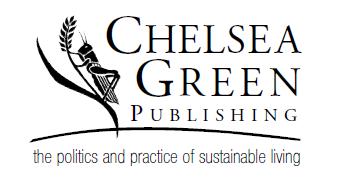Chapter One
1. Ernst Bloch, The Principle of Hope (Cambridge, MA: MIT Press, 1986). As quoted in Ronald T. Simon and Marc Estrin, Rehearsing with Gods (White River Junction, VT: Chelsea Green, 2004).
2. As quoted by Scott London on www.london.com/insight, 25 October 2003.
3. Kenny Ausubel, Seeds of Change (New York: HarperCollins, 1994).
4. Among the additives typically banned are hydrogenated fat, aspartame (artificial sweetener), and monosodium glutamate (MSG) (ibid. ).
5. Ralph Nader, from the foreword to Martin Teitel, Changing the Nature of Nature (Rochester, VT: Park Street Press, 1999).
6. As quoted by Vandana Shiva on www.twnside.org.sg/title/trials-cn.htm, 18 November 2005.
7. Organic Consumers Association, “OCA’s Guidelines for Local Grassroots Action,” www.organicconsumers.org/cando.htm, 18 November 2005.
8. Grace Gershuny and Joe Smillie, The Soul of Soil: A Soil Building Guide for Master Gardeners and Farmers, 4th edition (White River Junction, VT: Chelsea Green, 1999), 50.
9. Tom Dale and Vernon Gill Carter, Topsoil and Civilization (Norman: University of Oklahoma Press, 1955).
10. It was through this evolution that a group in Montreal formed around the same time, also calling themselves Food Not Lawns but with a slightly different focus. Though both groups formed without knowing the other existed, we eventually made friends and continue to share resources and information.
11. Sarah Robertson, “History of the Lawn,” Eugene Register-Guard, 26 April 1995.
12. Richard Burdick, “The Biology of Lawns,” Discover Magazine 24, no. 7 (July 2003).
13. Joe Hollis, “Paradise Gardening,” in Peter Lamborn Wilson and Bill Weinberg, Avant Gardening: Ecological Struggle in the City & the World (Seattle, WA: Autonomedia, 1999), 154.
14. Bill Mollison, Permaculture: A Designer’s Manual (Australia: Tagari Publications, 1988).
15. Maddy Harland, “Creating Permanent Culture,” The Ecologist 29, no. 3 (1999), 213. Joe Hollis, “Paradise Gardening,” in Peter Lamborn Wilson and Bill Weinberg, Avant Gardening: Ecological Struggle in the City & the World (Seattle, WA: Autonomedia, 1999), 162.
Chapter Two
1. Joe Hollis, “Paradise Gardening,” in Peter Lamborn Wilson and Bill Weinberg, Avant Gardening: Ecological Struggle in the City & the World (Seattle, WA: Autonomedia, 1999), 162.
2. Bill Mollison, Permaculture: A Designer’s Manual (Australia: Tagari Publications, 1988), 1.
Chapter Three
1. Tom Robbins, Even Cowgirls Get the Blues (New York: Bantam, 1976), 1–2.
2. Graham Bell, The Permaculture Way (London: Thorsons, 1992), 202.
3. Rosalyn Creasy, Complete Book of Edible Landscaping (San Francisco: Sierra Club, 1982), 17.
4. Ken and Barbara Kern, The Owner-Built Homestead (New York: Charles Scribners Sons, 1974), 69.
5. Vandana Shiva, “Now Monsanto Is after Our Water,” The Ecologist 29, no. 5 (August 1999).
6. Maude Barlow, “The Globalization of Water,” Hope Dance 5 (November–December 2000).
7. Bill Marsden, “Cholera and the Age of the Water Barons,” Center for Public Integrity, www.publicintegrity.org/water/report.aspx?sID=ch&rID=44&aID=44, 18 November 2005.
8. Shiva, “Now Monsanto Is after Our Water.”
9. Ibid.
10. Chris Runyan, “Privatizing Water,” World Watch 16, no. 1 (January 2003), 36–38.
11. Kern, The Owner-Built Homestead, 91.
12. Peter Farb, Ecology (New York: Time, 1963), 12–13.
13. Roofwater formula from Toby Hemenway, Gaia’s Garden (White River Junction, VT: Chelsea Green, 2002), 90.
14. Drywell design from Robert Kourik, Designing and Maintaining Your Edible Landscape, Naturally (Santa Rosa, CA: Metamorphic Press, 1986), 79.
Chapter Four
1. Chris Roth, “Gardening, Diversity, Peace and Place: An Interview with Alan Kapuler,” Talking Leaves (1999).
2. Geri Welzel Guidetti, “From the Ground Up,” in Build Your Ark! How to Prepare for Uncertain Times (Oxford, OH: Ark Institute, 1996).
3. Sir Albert Howard, The Soil and Health (New York: Schocken, 1972), 22.
4. Soil Foodweb, Inc., www.soilfoodweb.com, October 2003.
5. Ehrenfried Pfeiffer, Weeds and What They Tell (Springfield, IL: Biodynamic Farming and Gardening Association, 1976), 10.
6. Sources for biodynamic preparation descriptions: Beth Weiting, lecture delivered to Oregon Biodynamic Conference, 2001, and a flyer by the Josephine Porter Institute, Woolwine, VA, 2001.
7. Elaine Myers, “Pee on the Garden,” The Permaculture Activist (May 1992).
8. Ken Fern, Plants for a Future, 3rd edition (White River Junction, VT: Chelsea Green, 2000), 21–25.
9. Paul Stamets, www.fungiperfecti.com, October 2003.
Chapter Five
1. Ed Ayres, “The Environment,” Utne Reader Online, www.utne.com/web_special/web_specials_archives/articles/1826-1.html, 18 November 2005.
2. Joe Hollis, “Eat the Weeds,” as found on www.webpages.charter.net/czar207196/eden.htm, October 2003.
3. National Invasive Species Council, www.invasivespecies.gov, November 2003.
4. J. L. Hudson, “Stop the White List,” www.jlhudsonseeds.net/WhiteList.htm, 18 November 2005.
5. Sources for edible weeds chart: François Couplan, The Encyclopedia of Edible Plants of North America (New Canaan, CT: Keats, 1998); and Ben Harris, Eat the Weeds (Barre, MA: Barre, 1968).
1. Georgie Starbuck Galbraith, New York Times, 6 May 1960. As found on www.moore-warner. com/quotes.php, 3 December 2005.
2. Dr. Garrison Wilkes, as quoted in Kent Whealy, “Rescuing Traditional Food Crops,” www.primalseeds.org/OTHERSTUFF/new/rescuingcrops.htm, 18 November 2005.
3. Cary Fowler, Shattering: Food, Politics, and the Loss of Genetic Diversity (Tucson: University of Arizona Press, 1990).
4. Ibid.
5. Paul Raeburn, The Last Harvest: The Genetic Gamble That Threatens to Destroy American Agriculture (New York: Simon and Schuster, 1995).
6. Alan Kapuler, telephone interview, September 2004.
7. Carol Deppe, Breed Your Own Vegetable Varieties, 2nd edition (White River Junction, VT: Chelsea Green, 2000).
8. Ibid., 262.
9. Alan Kapuler, telephone interview, September 2004.
Chapter Seven
1. Sim Van Der Ryn and Stuart Cowan, Ecological Design (Washington, DC: Island Press, 1995), 9.
2. Patty Ceglia, “The Process of Creativity: A Holistic Approach to Design,” The Permaculture Activist 12, no. 2 (1991).
3. Van Der Ryn and Cowan, Ecological Design.
4. Gobradime is adapted from several similar acronyms found in Andrew Goldring, ed., Permaculture Teacher’s Guide (London: Permaculture Association, 2000).
5. Ceglia, “The Process of Creativity.”
6. Roger von Oech, A Whack on the Side of the Head: How to Unlock Your Mind for Innovation (Los Angeles: Warner Books, 1983), 6.
7. John Briggs and F. David Peat, The Seven Life Lessons of Chaos: Spiritual Wisdom from the Science of Change (New York: HarperPerennial, 2000).
Chapter Eight
1. Ernest Callenbach, Living Poor with Style (San Francisco: Bantam, 1972), 4.
2. Mahatma K. Gandhi, as quoted in Voluntary Simplicity, the book that accompanies a discussion course by the same name, given by the Northwest Earth Institute (Portland, OR: Northwest Earth Institute, 1998).
3. Joe Hollis, “Paradise Gardening,” in Peter Lamborn Wilson and Bill Weinberg, Avant Gardening: Ecological Struggle in the City & the World (Seattle, WA: Autonomedia, 1999), 159.
4. To take the Ecological Footprint Quiz, visit www.earthday.net/footprint/info.asp.
5. Bring Recycling, “Recycling Reaps Rich Rewards,” www.bringrecycling.org/newslet-ters/ 03fallnews.html, 3 December 2005.
6. Used News, newsletter of Bring Recycling (Eugene, OR: Bring Recycling, 2003).
7. See examples of SVO conversion kits at www.greaseworks.org.
8. John Briggs and F. David Peat, The Seven Life Lessons of Chaos: Spiritual Wisdom from the Science of Change (New York: HarperPerennial, 2000).
Chapter Nine
1. Peter Farb, Ecology (New York: Life Nature Library, 1963), 38–39.
2. Mark Lakeman, City Repair workshop, Eugene Permaculture Guild Annual Gathering at Lost Valley Education Center, Dexter, OR, 2001.
3. Greta Nagel, The Tao of Teaching (New York: Primus, 1994).
4. Andrew Goldring, ed., Permaculture Teacher’s Guide (London: Permaculture Association, 2000).
5. Jude Hobbs, Permaculture Teacher Training, Eugene, OR, August 2001.
6. Neil Postman and Charles Weingartner, Teaching as a Subversive Activity (New York: Delacorte, 1969).
7. Keith McHenry and C. T. Butler, Food Not Bombs (Tucson: See Sharp Press, 2000).
Chapter Ten
1. Greg Ruggiero and Stuart Sahulka, Project Censored: The Progressive Guide to Alternative Media and Activism (New York: Seven Stories Press, 1999), 7–10.
2. Ibid.
3. David Alexander, Ways You Can Manipulate the Media (Boulder, CO: Paladin Press, 1993).
Chapter Eleven
1. Bill Cosby, as quoted on www.quotationspage.com/quote/603.htm, 18 November 2005.
2. Nelson Mandela’s 1994 inaugural speech, originally written by Marianne Williamson, as found on http://jmm.aaa.net.au/articles/4564.htm, 18 November 2005.
3. Dale Hunter, The Art of Facilitation (Tucson: Fisher Books, 1995).
Chapter Twelve
1. Graham Bell, The Permaculture Way (London: Thorsons, 1992), 43.
2. Thoughts on meaningful work inspired by Lee Mackay and Mary Wallace, Children and Feminism (Vancouver, BC: LAFMPAG, 1987).
3. Sharon Lovejoy, Roots, Shoots, Buckets & Boots (New York: Workman, 1999), 137.
4. Louise Riotte, Sleeping with a Sunflower (Pownal, VT: Storey Books, 1987), 87–91.
5. John Heinerman, The New Encylopedia of Fruits and Vegetables (Paramus, NJ: Prentice Hall, 1995), 390.
6. Ibid., 409.
7. Printed with permission from John Sundquist, River’s Turn Farm, Coburg, OR, December 2005.
the politics and practice of sustainable living
CHELSEA GREEN PUBLISHING
CHELSEA GREEN sees publishing as a tool for effecting cultural change. Our trendsetting books explore the many facets of sustainable living, including organic gardening, green building, renewable energy, whole and artisan foods, and grassroots political activism. Our published works, while intensely practical, are also entertaining and inspirational, demonstrating that an ecological approach to life is consistent with producing beautiful, eloquent, and useful books.
We invite you to learn more at
www.chelseagreen.com.
To place an order or to request a
catalog, call toll-free (800) 639-4099,
or write to us at P.O. Box 428,
White River Junction,
Vermont 05001.
Shelter

The Passive Solar House: The Complete
Guide to Heating and Cooling Your Home
Revised Edition with CD-ROM
James Kachadorian
ISBN 1-933392-03-7 | $40
Energy
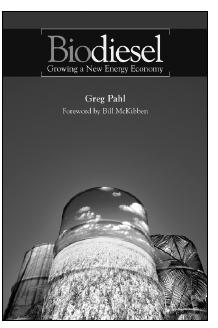
Biodiesel: Growing a New Energy Economy
Greg Pahl
Foreword by Bill McKibben
ISBN 1-931498-65-2 | $18
People
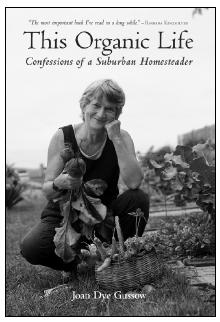
This Organic Life: Confessions of a Suburban Homesteader
Joan Dye Gussow
ISBN 1-931498-24-5 | $19.95
Place
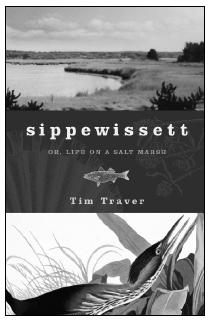
Sippewissett: Or, Life on a Salt Marsh
Tim Traver
ISBN 1-933392-14-2 | $22.50
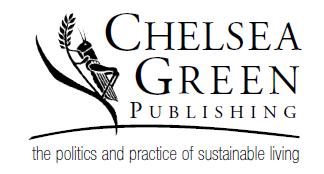
the politics and practice of sustainable living
CHELSEA GREEN PUBLISHING
CHELSEA GREEN’S celebration of sustainability includes a focus on whole and artisanal foods and the sustenance they provide to our land, work, and bodies. Ranging from field and harvest to kitchen and table, these books encourage readers to develop a stronger awareness of connections to the natural world while strengthening the bonds of family and community.
We invite you to learn more at
www.chelseagreen.com.
To place an order or to request a
catalog, call toll-free
(800) 639-4099,
or write to us at P.O. Box 428,
White River Junction,
Vermont 05001.
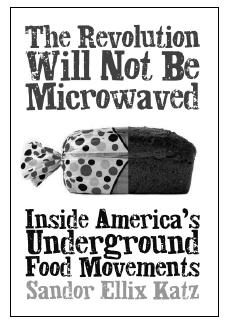
The Revolution Will Not Be
Microwaved: Inside America’s
Underground Food Movements
Sandor Ellix Katz
ISBN 1-933392-11-8 | $20
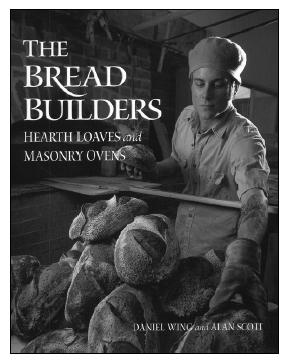
The Bread Builders: Hearth Loaves
and Masonry Ovens
Daniel Wing and Alan Scott
ISBN 1-890132-05-5 | $35
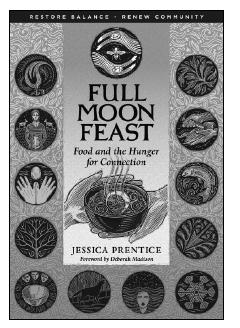
Full Moon Feast: Food and the
Hunger for Connection
Jessica Prentice
Foreword by Deborah Madison
ISBN 1-933392-00-2 | $25
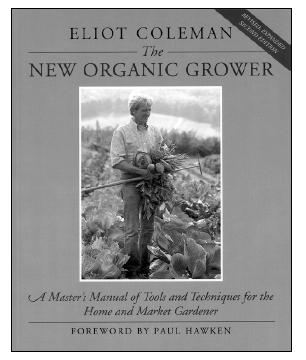
The New Organic Grower:
A Master’s Manual of Tools and
Techniques for the Home and
Market Gardener
Eliot Coleman
Foreword by Paul Hawken
ISBN 0-930031-75-X | $24.95
